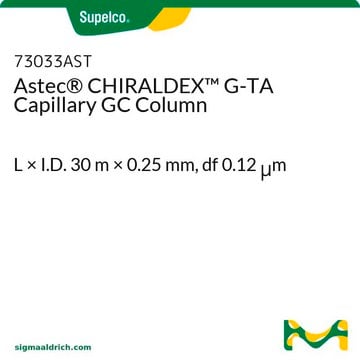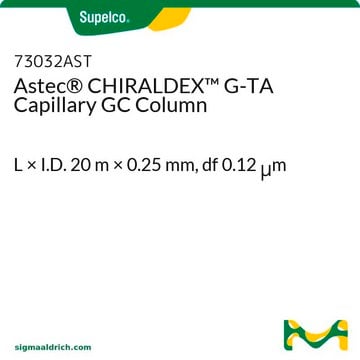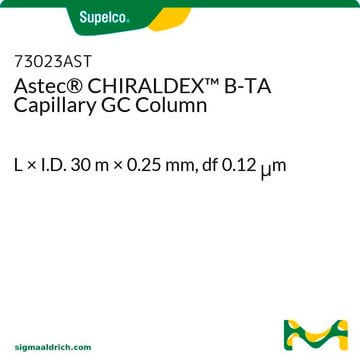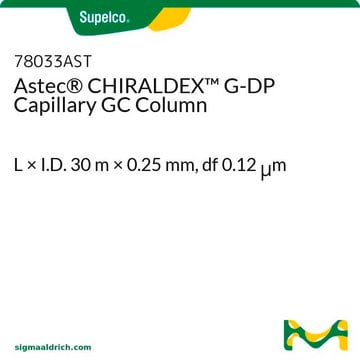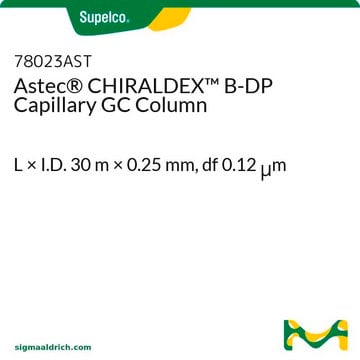73035AST
Astec® CHIRALDEX™ G-TA GC-Kapillarsäule
L × I.D. 50 m × 0.25 mm, df 0.12 μm
Synonym(e):
GC column, chiral, gamma-dextran
About This Item
Empfohlene Produkte
Materialien
fused silica
Beschreibung
GC capillary column
Verpackung
pkg of 1 ea
Parameter
-10-180 °C temperature (isothermal or programmed)
Beta-Wert
500
df
0.12 μm
Methode(n)
gas chromatography (GC): suitable
L × ID
50 m × 0.25 mm
Aktive Matrixgruppe
non-bonded; 2,6-di-O-pentyl-3-trifluoroacetyl derivative of γ-cyclodextrin phase
Anwendung(en)
agriculture
chemicals and industrial polymers
cleaning products
clinical
cosmetics
environmental
flavors and fragrances
food and beverages
forensics and toxicology
life science and biopharma
personal care
pharmaceutical (small molecule)
Säulenart
capillary chiral
Trenntechnik
chiral
Suchen Sie nach ähnlichen Produkten? Aufrufen Leitfaden zum Produktvergleich
Verwandte Kategorien
Allgemeine Beschreibung
Anwendung
- Enantioselective gas chromatographic analysis of aqueous samples by on-line derivatisation. Application to enzymatic reactions.: This study explores the use of the Astec CHIRALDEX G-TA Capillary GC Column for enantioselective gas chromatographic analysis. The method involves on-line derivatization, enabling the analysis of aqueous samples and applying this technique to enzymatic reactions. This innovative approach highlights the column′s capability in achieving high selectivity and sensitivity for chiral compounds in complex matrices (Mommers et al., 2008).
Chemische/physikalische Beständigkeit
- -10 °C bis 180 °C (isotherm und programmiert)
Sonstige Hinweise
Rechtliche Hinweise
Choose from one of the most recent versions:
Besitzen Sie dieses Produkt bereits?
In der Dokumentenbibliothek finden Sie die Dokumentation zu den Produkten, die Sie kürzlich erworben haben.
Artikel
Chromatographic enantiomeric separation of amino acids, like proline, is described for chiral GC analysis after derivatization.
Unser Team von Wissenschaftlern verfügt über Erfahrung in allen Forschungsbereichen einschließlich Life Science, Materialwissenschaften, chemischer Synthese, Chromatographie, Analytik und vielen mehr..
Setzen Sie sich mit dem technischen Dienst in Verbindung.